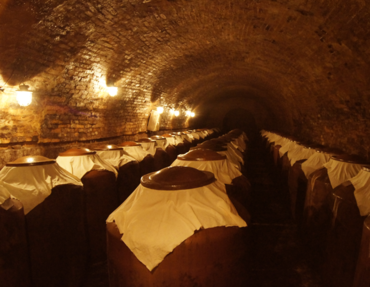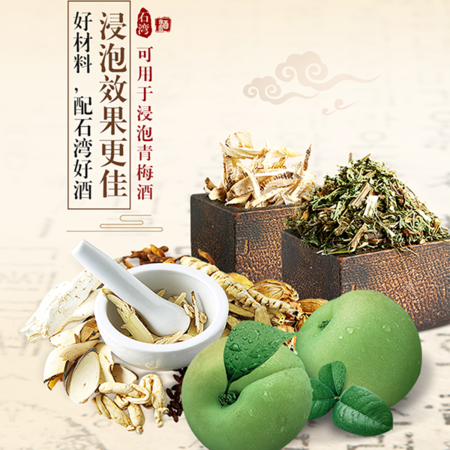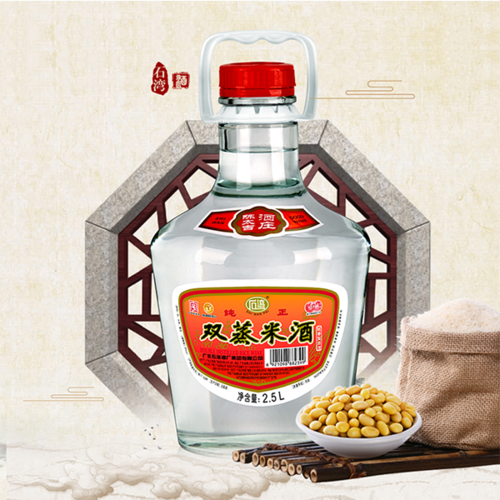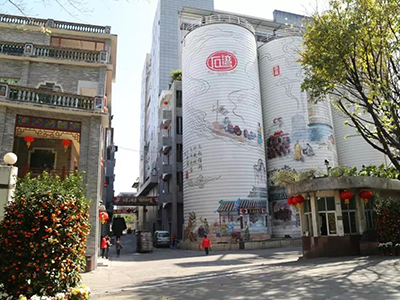Glutinous Rice Wine | Brewing method of glutinous rice wine
Founded in 1830, Shiwan Wine Group is the only Lingnan old distillery in China with continuous production of 190 years. It is also the brewing technology and cultural heritage of traditional Cantonese liquor.We provide Glutinous Rice Wine. You can browse related products and initiate consultations on our website.
The brewing method of glutinous rice wine:
1. Choose the rice and wash it: Choose the top-quality glutinous rice, wash it several times, wash the white pulp, and soak it in water. The water layer is about 20 cm higher than the rice layer. Water temperature and time during soaking: 14 hours below 15°C in winter and spring, 8 hours below 25°C in summer, with the rice grains soaked and no white hearts as the degree, the water is changed 1 to 2 times in summer to make it not sour.
2. Steam in the pot: Drain the soaked rice and put it into the steamer to steam the rice. When steaming rice, the firepower should be fierce, 10 minutes after the atmosphere is released, remove the cover, and sprinkle an appropriate amount of water on the rice layer. Steamed for another 20 minutes, the rice grains are swollen and shiny, loose and soft, and will not chew the teeth, that is, they are ripe and ready to be cooked.
3. Mixing the rice bowl: After the rice is out of the pot, evenly pour the rice on the rice with cold boiled water to prevent the rice grains from sticking. . If it is lumpy koji, it needs to be crushed into powder before sprinkling, or you can put the koji into cold boiling water to dissolve and then pour it together. Then stir the added koji well. Reserve a small amount of koji for later use. (It is easy to stir when treated with cold boiled water. The rice has already inhaled a certain amount of water. It is easier to observe the oozing liquor during the first fermentation. When mixing the koji, put a layer of rice, add a little koji and stir, layer by layer, layer by layer Stirring)
4. Fermentation and pressing: compact the glutinous rice, pound a pit in the middle to the bottom of the container (the function of this pit is mainly to facilitate the observation of the seepage of the wine during the brewing process), and then mix the rest of the wine with a little water and use Pat the surface of the flat glutinous rice with sticky water, and then close the lid. It is not advisable to seal the container completely, because the early saccharification process requires some oxygen, and it can be kept relatively closed. Keep the temperature at about 30 degrees, and room temperature in summer is enough. In winter, it can be placed next to the heater or use a hot water bottle and quilt. The low should be kept above 20 degrees, and the high should not exceed 40 degrees. It is easy to use a thermometer to check whether the temperature is appropriate. Open the lid for inspection after 2-3 days. If there is a large amount of wine in the pit, add clean water of about 33 degrees according to the ratio of raw rice 1:1.5, stir, and continue to keep warm and seal. Like strong wine, add a little bit of water and less water. After the altar is installed, the rice will overflow to the surface due to internal fermentation. Therefore, every 3 to 4 days, it is necessary to stir, press the rice and so on to the surface of the water, and seal the lid tightly. After 20 to 25 days of fermentation, a strong aroma of wine will be emitted in the jar, the rice will gradually sink, and the wine will begin to clarify, indicating that the fermentation is basically over. At this time, you can open the altar to extract the material, and filter the wine.
5. Clarify the aging: The pressed wine will continue to ferment and foam. If you want to stabilize the sweetness and alcohol content, you must stop the fermentation, heat it in a stainless steel pot, about 55 degrees, and cool it naturally. The upper layer of sake is extracted, the sake is left for 1 month to naturally clarify, the lower layer of lees is removed, and the jar is filled.
The brewing method of glutinous rice wine:
1. Choose the rice and wash it: Choose the top-quality glutinous rice, wash it several times, wash the white pulp, and soak it in water. The water layer is about 20 cm higher than the rice layer. Water temperature and time during soaking: 14 hours below 15°C in winter and spring, 8 hours below 25°C in summer, with the rice grains soaked and no white hearts as the degree, the water is changed 1 to 2 times in summer to make it not sour.
2. Steam in the pot: Drain the soaked rice and put it into the steamer to steam the rice. When steaming rice, the firepower should be fierce, 10 minutes after the atmosphere is released, remove the cover, and sprinkle an appropriate amount of water on the rice layer. Steamed for another 20 minutes, the rice grains are swollen and shiny, loose and soft, and will not chew the teeth, that is, they are ripe and ready to be cooked.
3. Mixing the rice bowl: After the rice is out of the pot, evenly pour the rice on the rice with cold boiled water to prevent the rice grains from sticking. . If it is lumpy koji, it needs to be crushed into powder before sprinkling, or you can put the koji into cold boiling water to dissolve and then pour it together. Then stir the added koji well. Reserve a small amount of koji for later use. (It is easy to stir when treated with cold boiled water. The rice has already inhaled a certain amount of water. It is easier to observe the oozing liquor during the first fermentation. When mixing the koji, put a layer of rice, add a little koji and stir, layer by layer, layer by layer Stirring)
4. Fermentation and pressing: compact the glutinous rice, pound a pit in the middle to the bottom of the container (the function of this pit is mainly to facilitate the observation of the seepage of the wine during the brewing process), and then mix the rest of the wine with a little water and use Pat the surface of the flat glutinous rice with sticky water, and then close the lid. It is not advisable to seal the container completely, because the early saccharification process requires some oxygen, and it can be kept relatively closed. Keep the temperature at about 30 degrees, and room temperature in summer is enough. In winter, it can be placed next to the heater or use a hot water bottle and quilt. The low should be kept above 20 degrees, and the high should not exceed 40 degrees. It is easy to use a thermometer to check whether the temperature is appropriate. Open the lid for inspection after 2-3 days. If there is a large amount of wine in the pit, add clean water of about 33 degrees according to the ratio of raw rice 1:1.5, stir, and continue to keep warm and seal. Like strong wine, add a little bit of water and less water. After the altar is installed, the rice will overflow to the surface due to internal fermentation. Therefore, every 3 to 4 days, it is necessary to stir, press the rice and so on to the surface of the water, and seal the lid tightly. After 20 to 25 days of fermentation, a strong aroma of wine will be emitted in the jar, the rice will gradually sink, and the wine will begin to clarify, indicating that the fermentation is basically over. At this time, you can open the altar to extract the material, and filter the wine.
5. Clarify the aging: The pressed wine will continue to ferment and foam. If you want to stabilize the sweetness and alcohol content, you must stop the fermentation, heat it in a stainless steel pot, about 55 degrees, and cool it naturally. The upper layer of sake is extracted, the sake is left for 1 month to naturally clarify, the lower layer of lees is removed, and the jar is filled.







